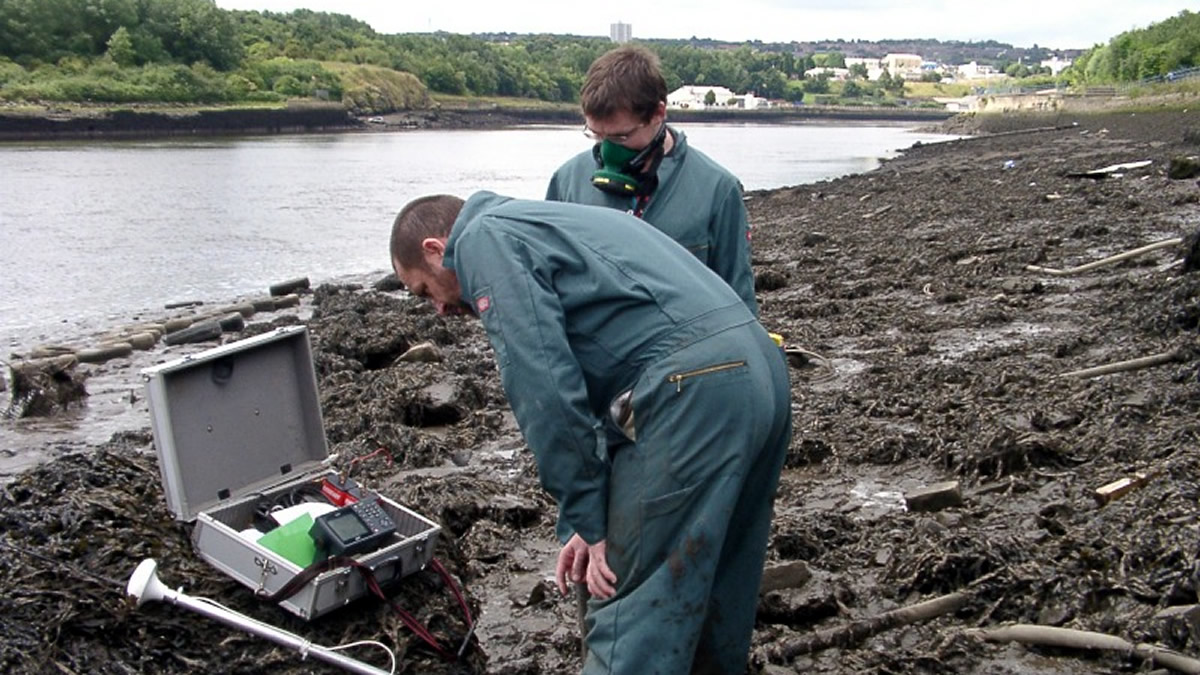What is Health Impact Assessment?
Health Impact Assessment (HIA) is a practical approach used to judge the potential health effects of a policy, programme or project on a population, particularly on vulnerable or disadvantaged groups. Recommendations are produced for decision-makers and stakeholders, with the aim of maximizing the proposal’s positive health effects and minimizing its negative health effects. The approach can be applied in diverse economic sectors and uses quantitative, qualitative and participatory techniques.
HIA provides a way to engage with members of the public affected by a particular proposal. It also helps decision-makers make choices about alternatives and improvements to prevent disease or injury and to actively promote health. It is based on the four interlinked values of democracy (promoting stakeholder participation), equity (considering the impact on the whole population), sustainable development and the ethical use of evidence.
Importance of Health Impact Assessment
Economic sectors such as transport, agriculture and housing have profound impacts on health. For instance, transport is a major factor in traffic injuries, air pollution and noise, and healthy transport policies can help reduce these risks, as well as promoting walking and cycling. In agriculture, fertilizers and pesticides may boost crop yields, but wise use is important to protect farm workers and consumers from excessive chemical exposure.
Health impact assessment can be a valuable tool for helping to develop policy and assisting decision-makers in these and other areas. Because HIA provides a way to engage with members of the public affected by a particular proposal, it can show that an organization or partnership wants to involve a community and is willing to respond constructively to their concerns. The views of the public can be considered alongside expert opinion and scientific data, with each source of information being valued equally within the HIA. The resulting decisions are often more easily accepted by all stakeholders because they are based on the ideals of transparency and active participation.
Health impact assessments begin by identifying the relevant stakeholders. This usually produces a large number of relevant people and organizations. HIA is a framework to implicate stakeholders in a meaningful way, allowing their messages to be heard. The process draws on all resources in the project and wider community to help guide decision making, including developers and planners, employers and unions, local and national health workers, and those living in the community—particularly the most vulnerable members of the community and those directly impacted by the programme or project.
How to conduct a Health impact assessment
The HIA process begins with screening activities meant to quickly establish the health relevance of the policy, programme or project. It then investigates the key issues and public concerns and creates boundaries and expectations. In the appraisal phase, a rapid or in-depth assessment is completed on the health impacts of the project with a focus on those most affected. While there is no single agreed method for undertaking HIA, a general pattern has emerged amongst methods and there is much overlap between them.
Guidance documents often break HIA into four, five or six stages. Despite the differing number of stages, it is important to note that there are no significant differences between the methods. Also, the theoretical stages often overlap and intermingle, and a clean separation is not often obvious in practice. The stages are: screening, scoping, appraisal, reporting, and monitoring.
Evidence commonly used in HIA
Three sources of evidence are typically used in an HIA:
- Existing reviews or “off-the shelf” evidence
- Searching for evidence and conducting a review
- Generating and analyzing new evidence
These methods are all commonly employed in HIA. However, in rapid HIAs with limited resources, less effort may be placed on some aspects. Often, the expression “best available evidence” is used, to acknowledge the resource and time constraints affecting the quality and depth of the evidence used in the appraisal stage.
Searching for existing evidence and conducting a review
A specific review of existing evidence is carried out as part of some HIAs. However the review may not be systematic, because there is a risk that the reviewer may (consciously or unconsciously) be looking for articles that support pre-conceived ideas or a particular viewpoint. This risk is present in all fields of scientific endeavor, not just HIA. Presenting one-sided evidence jeopardizes a key value of HIA: the ethical use of evidence.
Key steps in undertaking an objective and methodological review are:
- A standard approach to guide the process
- Being systematic
- Focusing on a specific question
- Assessing the quality of the studies to be included in the review
- Analysing and combining findings
- Presenting clear conclusions and recommendations
Using a standard approach to guide the process
Using a standard approach to guide one’s review can be highly useful, examples can be found at the Cochrane Collaboration or the National Health and Medical Research Council. Such approaches discuss issues such as creating a set of inclusion and exclusion criteria before starting the search, to reduce the temptation to exclude studies that may not agree with preconceived ideas.
Being systematic
To reduce the risk of presenting only one side of the evidence, it is important to be systematic. Developing a systematic search strategy is not always easy, and getting help from a person with library and searching skills is recommended. Deciding what electronic databases to search, the timeframe for the search, the keywords to be used, obtaining software to manage the abstracts, ordering and retrieving documents, are all issues where a trained person may help. An example is the “Systematic Review of Housing Improvement and Health”, that contains the issues described above.
Full systematic reviews consume a lot of time and resources. Even when time is short, searches should be systematic and transparent – setting very tight inclusion and exclusion criteria help make it manageable.
Focusing on a specific question
There is an abundance of information that can be retrieved, and it is easy to become bogged down by setting a general question that touches on too many components. Setting a tightly focused question allows the reviewer to eliminate peripheral evidence, and helps keep the process manageable. Common ways of narrowing down a question are being very specific in defining the topic, or concentrating on specific target groups or geographical locations.
Assessing the quality of the studies included in the review
Assessing and combining the information in the articles identified during the literature search can be quite a challenge. However, quality appraisal of the studies is essential in order to determine the strength of the conclusions of each article or series of articles. Usually, a review presents different types of data, drawn from different study types that help to answer the research question. The most common way to deal with data from different study types is to present each piece of evidence separately and discuss the limitations of each. Methods for the quality assessment of studies are available at the Cochrane Collaboration or the National Health and Medical Research Council.
Analyzing and combining findings
The methods used to analyze the findings should be identified. For example, some authors may use meta-analyses, and these should be discussed in depth. Others use methods such as content analysis, where concepts are identified and categorized on a variety of levels to identify key themes. Whatever method is used, it is always useful to base a new analysis on a proven methodological approach (the haphazard assembly of data should be avoided). Any gaps in available evidence should be discussed. Combining findings is discussed further in “Bringing together different types of evidence”.
Presenting clear conclusions and recommendations
The development of recommendations is as important as the identification and assessment of impacts, therefore sufficient resources must be set aside for this task within the HIA. Recommendations should focus on the most important health impacts and on options to prevent or mitigate negative effects and enhance positive effects.
The choice of preventive, mitigation or enhancement options is likely to be a function of the social and financial significance of risks, their manageability, and the availability of resources. Decisions to actually enact these options will also be driven by the consensus obtained around them. Key to generating this consensus is early and regular communication with decision-makers and affected communities.
What evidence is required?
The search for evidence often begins during the scoping stage of an HIA (identifying what to do and how to do it). The scoping stage involves, among other tasks, determining what information needs to be collected. This information will provide background and context to support the whole HIA, and point towards potential sources of evidence.
Setting boundaries for the collection of evidence
As with any task, it is important to be clear about the objective of the HIA. Scoping the boundaries of the HIA will often have a major impact on the type of information and evidence required:
- Is the HIA rapid or comprehensive? – The defining feature of a comprehensive HIA is the collection of new primary data. This takes time, which is why most of the HIAs that are undertaken are rapid HIAs in which no new data is generated – only the best available evidence is used.
- What is the geographical boundary of the HIA? – Boundaries can create problems for the collection of evidence. When communities are small, they often have very little statistical information at a small area level.
- What is the timeframe for the HIA to deliver? – Evidence must be collected and be made available for analysis at the right moment. This is particularly challenging for rapid HIAs, when there is little time for the whole HIA, let alone for searching for evidence. Practitioners should be realistic about what evidence sources can be accessed in the available time.
- What skills are there in the HIA team? – Finding evidence can be difficult, and obtaining access to “information specialists” can be a real advantage. Such people may exist in local health departments, universities or libraries. Some evidence sources require a level of analysis before they can be used in an HIA; this analysis requires time and skill.
- What are the values of the steering group regarding the use of evidence? – Do the members of the steering group value community experience at the same level as scientific evidence? And how will they manage conflicts in evidence that may arise?
- Key decision-makers will have to be engaged. Who are they? – Knowledge about decision-makers helps work out the type of evidence that needs to be provided. This does not mean telling decision-makers what they want to hear, instead it is about providing evidence in a format (qualitative or quantitative) that is useful for the decisions that have to be taken.
- What is the target group of the proposal? – The target group may have low literacy levels, speak different languages, be difficult to contact, have little or no community representation, be culturally excluded from mainstream society and have diverse or opposing viewpoints. Consideration of all these issues is required when collecting information from such peoples. Culturally sensitive methods will be required, often using people from the communities to assist in the collection of evidence.
- Will the HIA be monitored and evaluated? – If so, specific information must be collected at the start of the process (for example, baseline data), during the HIA (process information), at delivery of the HIA (impact information) and during the implementation of the proposal (monitoring and outcome information).
Evidence commonly used in HIA
Three sources of evidence are typically used in an HIA:
- Existing reviews or “off-the shelf” evidence
- Searching for evidence and conducting a review
- Generating and analyzing new evidence
These methods are all commonly employed in HIA. However, in rapid HIAs with limited resources, less effort may be placed on some aspects. Often, the expression “best available evidence” is used, to acknowledges the resource and time constraints affecting the quality and depth of the evidence used in the appraisal stage.
Existing reviews of evidence – or ‘off-the shelf‘ evidence
Using existing reviews of evidence is common in the HIA process, since the timeframes and resources available for finding evidence are often short.
It is important to be systematic when searching for reviews. It is highly unlikely that different reviews will reach identical conclusions, so presenting evidence from several reviews is valuable. Conclusions may vary because of different aims and objectives, different studies being included and excluded, and because the personal opinions of the authors may be reflected in the work.
Key reviews for HIA
The types of reviews most useful for HIA practitioners are those that look into both the positive and negative impacts of an intervention; those that describe how poor health outcomes may be reversed; those that describe how a proposal may act on inequalities; and economic evidence. An example is “Housing improvement and health gain: a summary and systematic review” that investigates how interventions in the housing sector may lead to improved health.
Such reviews are also useful for providing information about the possible mitigation of negative effects, or providing ideas for alternative options.
Other reviews for use in HIA
A great number of observational studies and reviews of such studies show an association between poor housing and poor health, but do not provide convincing evidence about the effectiveness of interventions. This type of evidence can be used to point to the interventions that should be tried, but does not prove that they work. Such studies provide useful background information for an HIA, but basing recommendations on such information is less than ideal.
Where can I look for reviews?
Several HIA websites provide reviews about the effectiveness of interventions. Searching this website and the HIA Gateway are good starting points. Many other organizations and collaborations have a specific responsibility for undertaking reviews and are listed in the Health Development Advice (HDA) evidence base.
Searching for existing evidence and conducting a review
A specific review of existing evidence is carried out as part of some HIAs. However the review may not be systematic, because there is a risk that the reviewer may (consciously or unconsciously) be looking for articles that support pre-conceived ideas or a particular viewpoint. This risk is present in all fields of scientific endeavor, not just HIA. Presenting one-sided evidence jeopardizes a key value of HIA: the ethical use of evidence.
Key steps in undertaking an objective and methodological review are:
- Using a standard approach to guide the process
- Being systematic
- Focusing on a specific question
- Assessing the quality of the studies to be included in the review
- Analysing and combining findings
- Presenting clear conclusions and recommendations
Using a standard approach to guide the process
Using a standard approach to guide one’s review can be highly useful, examples can be found at the Cochrane Collaboration or the National Health and Medical Research Council. Such approaches discuss issues such as creating a set of inclusion and exclusion criteria before starting the search, to reduce the temptation to exclude studies that may not agree with preconceived ideas.
Being systematic
To reduce the risk of presenting only one side of the evidence, it is important to be systematic. Developing a systematic search strategy is not always easy, and getting help from a person with library and searching skills is recommended. Deciding what electronic databases to search, the timeframe for the search, the keywords to be used, obtaining software to manage the abstracts, ordering and retrieving documents, are all issues where a trained person may help. An example is the “Systematic Review of Housing Improvement and Health”, that contains the issues described above.
Focusing on a specific question
There is an abundance of information that can be retrieved, and it is easy to become bogged down by setting a general question that touches on too many components. Setting a tightly focused question allows the reviewer to eliminate peripheral evidence, and helps keep the process manageable. Common ways of narrowing down a question are being very specific in defining the topic, or concentrating on specific target groups or geographical locations.
Assessing the quality of the studies included in the review
Assessing and combining the information in the articles identified during the literature search can be quite a challenge. However, quality appraisal of the studies is essential in order to determine the strength of the conclusions of each article or series of articles. Usually, a review presents different types of data, drawn from different study types that help to answer the research question. The most common way to deal with data from different study types is to present each piece of evidence separately and discuss the limitations of each. Methods for the quality assessment of studies are available at the Cochrane Collaboration or the National Health and Medical Research Council.
Analyzing and combining findings
The methods used to analyze the findings should be identified. For example, some authors may use meta-analyses, and these should be discussed in depth. Others use methods such as content analysis, where concepts are identified and categorized on a variety of levels to identify key themes. Whatever method is used, it is always useful to base a new analysis on a proven methodological approach (the haphazard assembly of data should be avoided). Any gaps in available evidence should be discussed. Combining findings is discussed further in “Bringing together different types of evidence”.
Presenting clear conclusions and recommendations
The development of recommendations is as important as the identification and assessment of impacts, therefore sufficient resources must be set aside for this task within the HIA. Recommendations should focus on the most important health impacts and on options to prevent or mitigate negative effects and enhance positive effects.
The choice of preventive, mitigation or enhancement options is likely to be a function of the social and financial significance of risks, their manageability, and the availability of resources. Decisions to actually enact these options will also be driven by the consensus obtained around them. Key to generating this consensus is early and regular communication with decision-makers and affected communities.
Generating and analyzing new evidence – through surveys, interviews, primary research, and workshops etc.
Most HIAs generate new evidence that can be used in the appraisal stage. For example, even rapid HIAs often hold a workshop to gather views and evidence of stakeholders.
Generating evidence requires the setting of research questions, and this in turn influences decisions about which research methods to use. Other factors to consider are the resources and skills, and timeframe available. The golden rule in such work is not to collect data that will not be used, as this wastes time and raises expectations among participants. Methods chosen should be able to capture the reality of the situation, with all of its uncontrollable variables and this normally requires the use of both qualitative and quantitative methods.
Ask for support
Before starting such work however, enlisting the help and support of a person with research skills is highly recommended. It is important to realize that while many of these methods may appear simple to carry out, this is masked by the preparation required for the research to go well.
Commonly used research methods
- Using current data collection systems. Relevant data may be routinely collected in surveys, monitoring of trends and needs assessments – check government departments, local healthcare providers, local and regional councils, universities, etc
- Workshops. This is a commonly used method in HIA to bring together a large number of stakeholders to discuss the proposal, discuss evidence of impact, and generate possible solutions.
- Focus groups. A qualitative method for gathering detailed information from a small group of people. A person to guide the group discussion is required. This approach provides large amounts of practical evidence about people’s perceptions and experiences and is often used in HIA to gather community and/or expert views on a topic.
- In-depth individual interviews. A qualitative method for gathering detailed information from one or two people at a time. This approach provides large amounts of practical evidence about people’s perceptions and experiences and is often used in HIA to gather community and/or expert views on a topic.
- Questionnaires/surveys. Using written, phone, web or computer based questionnaires can be useful to gather both quantitative and qualitative information. Question design and sampling are important issues to get right. This approach often allows a broader reach across the population.
- Textual/documentary analysis. Existing documents often contain considerable evidence. These can include non-traditional sources such as meeting minutes and emails.
- Diary/log books. Keep a diary or set up a log book to track events/ experiences as they happen.
- Physiological tests. In large studies, tests on people’s physiological reaction can be undertaken. For example, in the Schipol Airport HIA in the Netherlands, researchers included field studies about the impact of plane noise on residents’ sleep.
- Observation. A common method used to collect information about how areas are used and how people behave.
- Image-based evidence. Photography and video evidence can be used to collect evidence about how areas are used and how people behave.
- Case studies. Carrying out in-depth study of an individual, a situation, an organization, or a place. This approach uses many of the above methods to gather detailed information about one topic.
With each of the methods outlined above, different types of analysis can be carried out. It is important to involve people with research skills in the analysis process to ensure that the conclusions drawn are valid. Considering the skills available within your team for analysis will help decisions on what research methods should be used, and what questions can/should be asked.
Bringing together different types of evidence
At some point, an individual or a group must decide what the main evidence messages are. This is one of the most challenging components of any HIA.
Usually the different forms of evidence support one another, but sometimes findings can be conflicting. Evidence can conflict in the:
- direction of findings, for example one type of evidence reports a positive health effect, while another reports a negative effect on health.
- size of the health effect, for example one type of evidence may report a small, or statistically insignificant effect, while another type of evidence may report a significant health effect.
When bringing the different types of evidence together, questions and issues that can be considered are:
What are your values regarding evidence?
People value different types of evidence differently. Within the clinical sciences, the general view is that systematic reviews are the most robust and reliable markers of effectiveness, closely followed by a well-designed meta-analyses. Both rely heavily on data from randomized controlled trials, and give less weight to case-control studies and observational studies. Yet relying exclusively on systematic reviews and meta-analyses within HIA leads to significant limitations. Another, broader approach is to value all types of evidence, including experiential evidence of members of the public.
As with all areas dealing with evidence, there are challenges in trying to balance different types of conflicting evidence within HIA. In some areas such as qualitative research, researchers may argue about the threshold of what is considered good quality work. There is no universally applicable method for systematically combining or reviewing qualitative findings, although a number of projects have developed interesting methodological approaches in this area. Nor is there any clear or agreed method for combining non-traditional forms of evidence – such as the study of public opinion – with evidence from more traditional studies to provide a comprehensive assessment of the effectiveness of different interventions. For the time being, the methods described below are among those used at present by HIA practitioners to overcome such difficulties.
How do HIA practitioners combine evidence?
For some practitioners, one of the main reasons for using HIA is that it is a participatory approach that values the views of the community. If this is to be done seriously, then all types of evidence must be valued during the assessment of a proposal. Within the HIA process, the views of the public can sit alongside other evidence such as expert opinion and scientific data, with each being presented and valued in an appropriate manner. Two options for considering the evidence are:
- deciding what type of evidence will be given the highest weighting. Considering the diversity of stakeholder views is needed, but an attempt to provide a clear evidence-base of the potential health impacts will assist the development of a single set of recommendations. The steering group have an important role in making the decisions around what types of evidence are valued. It is useful if the steering committee have discussed such issues well before they are presented with any potentially challenging decisions.
- weighting evidences equally. This will mean that a wider range of evidence can move into the next stage of the HIA, ‘formulating recommendations’, but this is not necessarily a problem. Recommendations that cover all possible decisions can be provided from this evidence. The recommendations can acknowledge conflicting evidence and can outline stakeholder views on the evidence. This approach can work as HIA does not make decisions, it provides information in a clear and transparent way for decision makers.
Presenting the evidence in a user-friendly form
The evidence gathered is usually presented to a number of different audiences:
Consideration of the different realities of each of these groups is required when determining how evidence will be presented. What is suitable for one group is unlikely to be suitable for another.
- Steering group
- Stakeholders
- Participants of appraisal workshops
Conclusions and recommendations are then prepared on the positive and negative aspects to help guide decision making. When the project is complete or the policy is initiated, HIA begins the monitoring phase, in which the impacts are recorded and analyzed to enhance the existing evidence base and better inform later developments.






